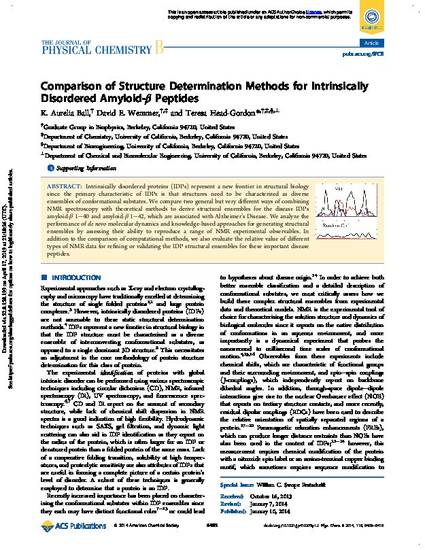
Intrinsically disordered proteins (IDPs) represent a new frontier in structural biology since the primary characteristic of IDPs is that structures need to be characterized as diverse ensembles of conformational substates. We compare two general but very different ways of combining NMR spectroscopy with theoretical methods to derive structural ensembles for the disease IDPs amyloid-β 1–40 and amyloid-β 1–42, which are associated with Alzheimer’s Disease. We analyze the performance of de novo molecular dynamics and knowledge-based approaches for generating structural ensembles by assessing their ability to reproduce a range of NMR experimental observables. In addition to the comparison of computational methods, we also evaluate the relative value of different types of NMR data for refining or validating the IDP structural ensembles for these important disease peptides.
